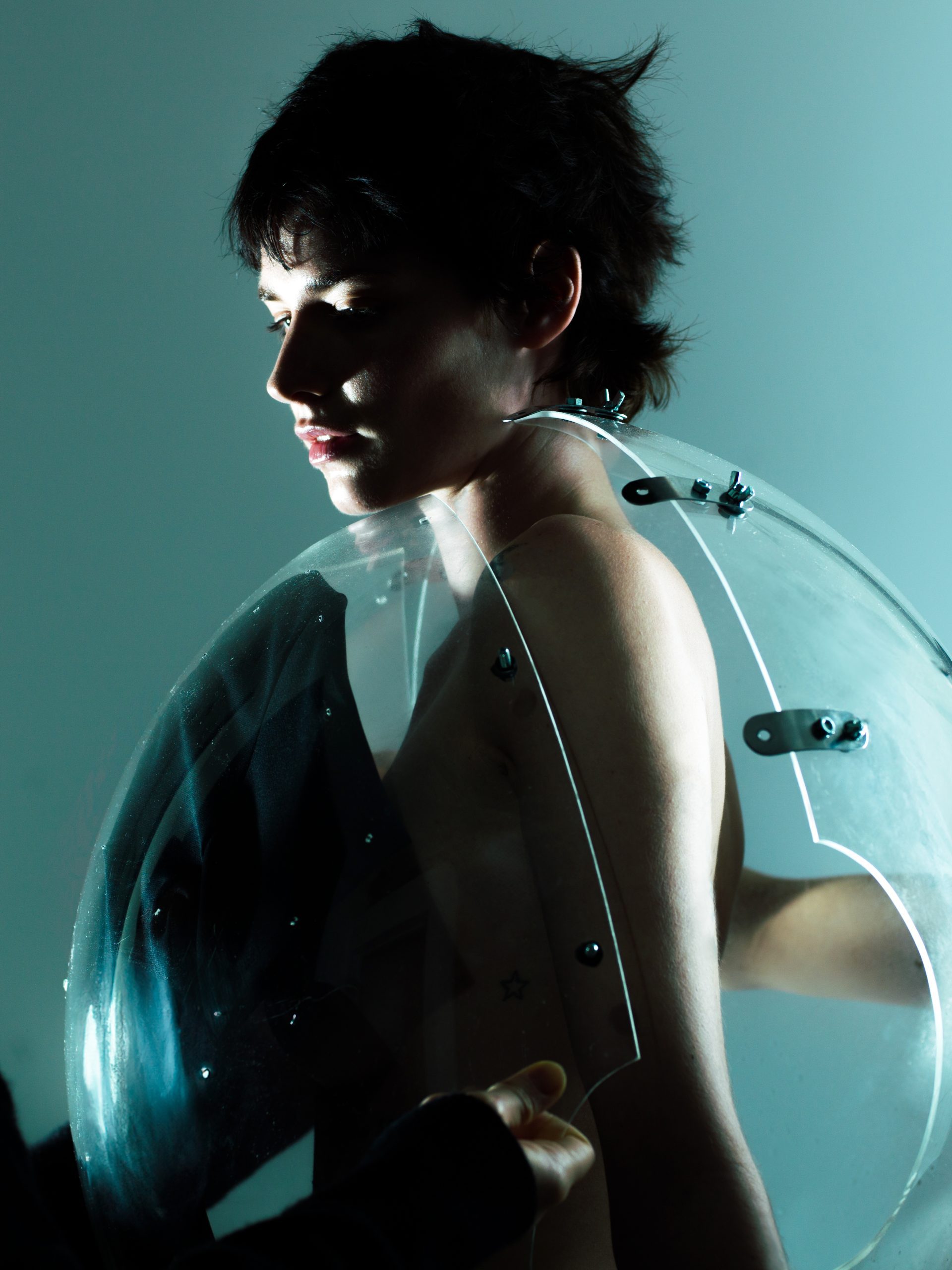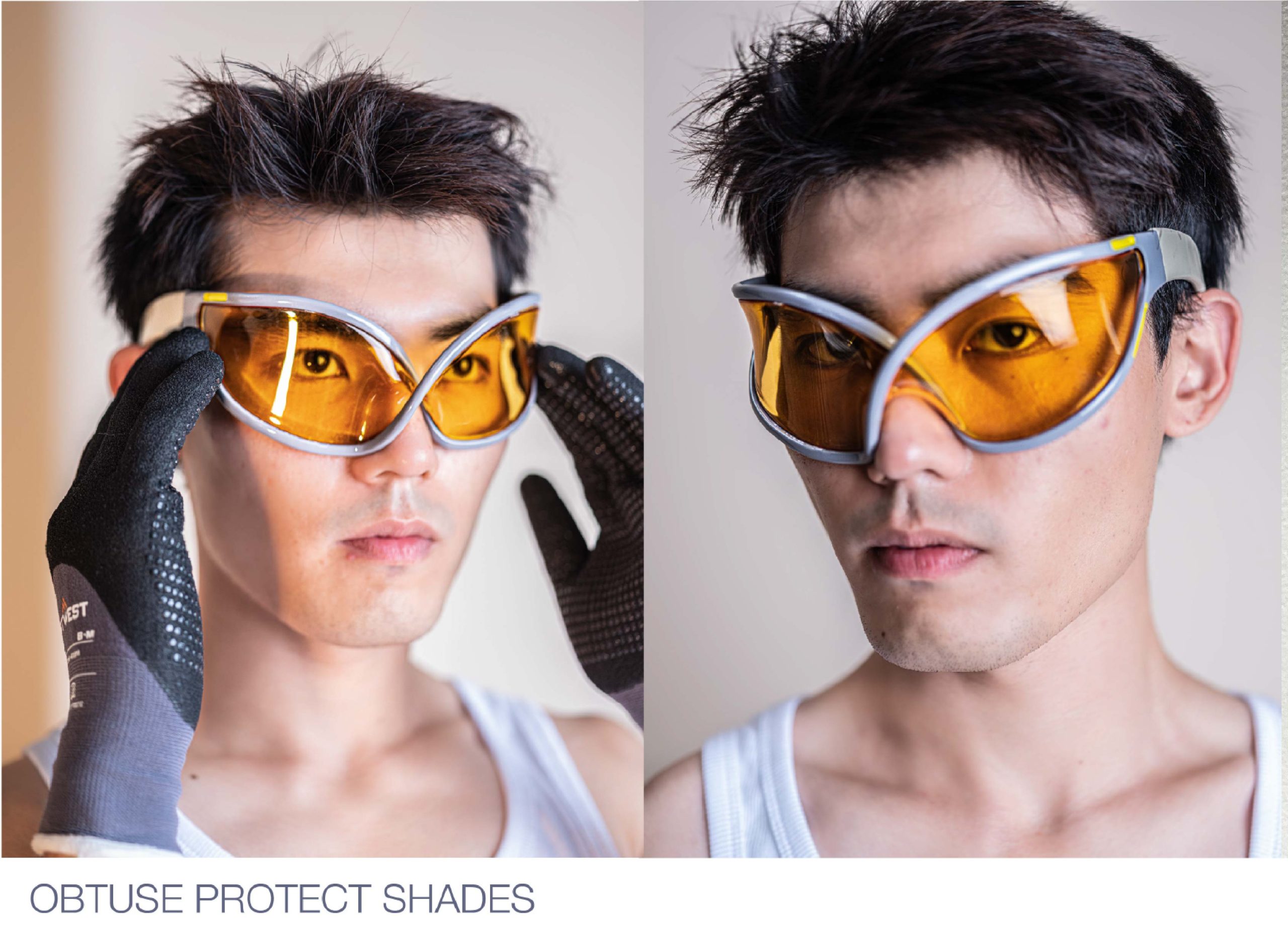Fashion and technology are no longer two entirely separate entities. The relationship between the two is developing at a formidable rate, and as a result, the fashion industry is changing exponentially. Ideas that were once a figment of the imagination are now becoming a reality, as new technologies are intertwining with the foundations of the industry. Smart textiles and wearable technology are becoming a new standard.
Photosensitive fabrics are an exciting new concept which are beginning to sneak onto the runway. They contain photochromic dyes, which have the unique ability to change colour when exposed to UV rays of sunlight. When the conditions change and the radiation is removed, the fabric will revert to its original form. The creative opportunities generated by this are endless, as garments are able to adapt to the circumstances they are faced with. Could this take the concept of day-to-night dressing to a whole new level, with clothes that literally have the ability to morph into an entirely new piece?
Established in 2004, is a brand redefining the very essence of fashion, CuteCircuit. At its core, is the brainchild of the visionary duo, Francesca Rosella and Ryan Genz, who masterfully intertwined the worlds of fashion and technology brimming with interactivity. The brand’s vast repertoire encompasses prêt-à-porter collections, haute couture, and bespoke pieces to both private and A-list celebrities with the likes of Katy Perry, U2, and Nicole Scherzinger who wore the World’s First Couture Twitter Dress. In essence, CuteCircuit, under formidable leadership, has transcended clothing to create immersive experiences, forging a path to a new interconnected world.
Kunikiko Moringa, the brains behind the Japanese label Anrealage, is another true pioneer, willing to jump head first into the world of tech-enhanced attire. He made headlines following his FW23 show during Paris Fashion Week in February 2023, where models entered the runway wearing designs in plain white, but left flaunting bright colours and patterns. Creating his collection from a vast array of photosensitive fabrics – which included satins, faux furs, and lace – his runway reacted to the UV rays of daylight, and transformed in front of the audience. This concept was repeated at the brand’s SS23 show, with the addition of a new material – an environmentally friendly PVC, comprised of plastics that are phthalate free. Whilst many designers are dabbling with technology, dipping a toe in the pond, and incorporating it into their output somewhat haphazardly , Moringa is making a deliberate continued alliance with tech-elevated fabric. His creations are signalling a real shift towards a new, almost sci-fi like era in fashion, where clothes are more than what meets the eye.
Coperni was another brand who markedly delved into the secrets of science for their SS23 offering — the Bella Hadid spray-on dress was an insta-worthy moment that flooded news and socials. Dr Torres, the inventor of Fabrican, an invention that, as its name would imply, permits the seamless creation of non-woven fabric straight from a can, was the genius behind the stunt. Yet the Fabrican invention might have a more profound utility, and not just a method of adding arbitrary flair and flamboyance to couture shows. According to the team, it may “accelerate the traditional way of constructing garments”, and become adopted as a “3D sketch tool”, through its ability to mould and mutate to the silhouette of the wearer. Perhaps we may also see Fabrican, and various iterations of ready-made fabric, gain traction with the public as they begin to customise and personalise product with cravings for singularity and distinctiveness.
More broadly, athleisure is another sector of the industry adopting wearable tech. Under Armour, and their performance line Rush, is using energy repurposing technology to elevate the effectiveness of their garments in facilitating your workout. Throughout this collection, Under Armour have incorporated a fabric that absorbs the heat emitted by the body during exercise, thought to optimise performance, boost energy, and promote recovery.
The disruption of the athleisure industry doesn’t end there. Apple Watches and Fitbits may have been around for years, monitoring heart rates and activity levels – but what if you were told that now your workout clothes could do that for you? WHOOP – a wearable technology brand – released a line back in 2021 which was the first of its kind, as items such as t-shirts and shorts contained a concealed pod which would track data during workouts. A decade ago, the idea that your clothes would be able to monitor performance was laughable. However, it is now a reality. Who knows what new concepts will arise in the next ten years? Are smart textiles with the ability to record information themselves on the horizon?
Adobe’s interactive dress—debuted at the Max conference in Los Angeles late last year – is perhaps the most exciting and current example of a creation utilising smart textiles. Research scientist Christine Dierk made headlines when she stepped onto the stage in a pattern changing dress. Entitled Project Primrose, Dierk developed a dress which contains laser-cut, polymer dispersed, liquid crystals, each of which are undercut with a printed circuit board, thus allowing the pattern to fluctuate. Whilst this concept hasn’t found its way onto the runway at a major fashion week as yet, it is only a matter of time. Dierk hopes that this cutting-edge innovation will lend itself to sustainability, as designers will have the option of creating several looks on a single canvas.
Looking further into the future, the increase of technology in the fashion industry is simply inevitable. Textiles are developing rapidly, and we may begin to see smart textiles which are able to adapt to environmental changes, such as temperature, by adjusting insulation levels accordingly. Likewise, in the world of high fashion, there will likely be an increase in the use of 3D printing and other concepts to produce cutting edge designs.
Ultimately, it is difficult to predict how far technology will take fashion, although one thing is for certain, the collaboration between the two will not slow down anytime soon.
Written my Lucy Ashburner Contributor





